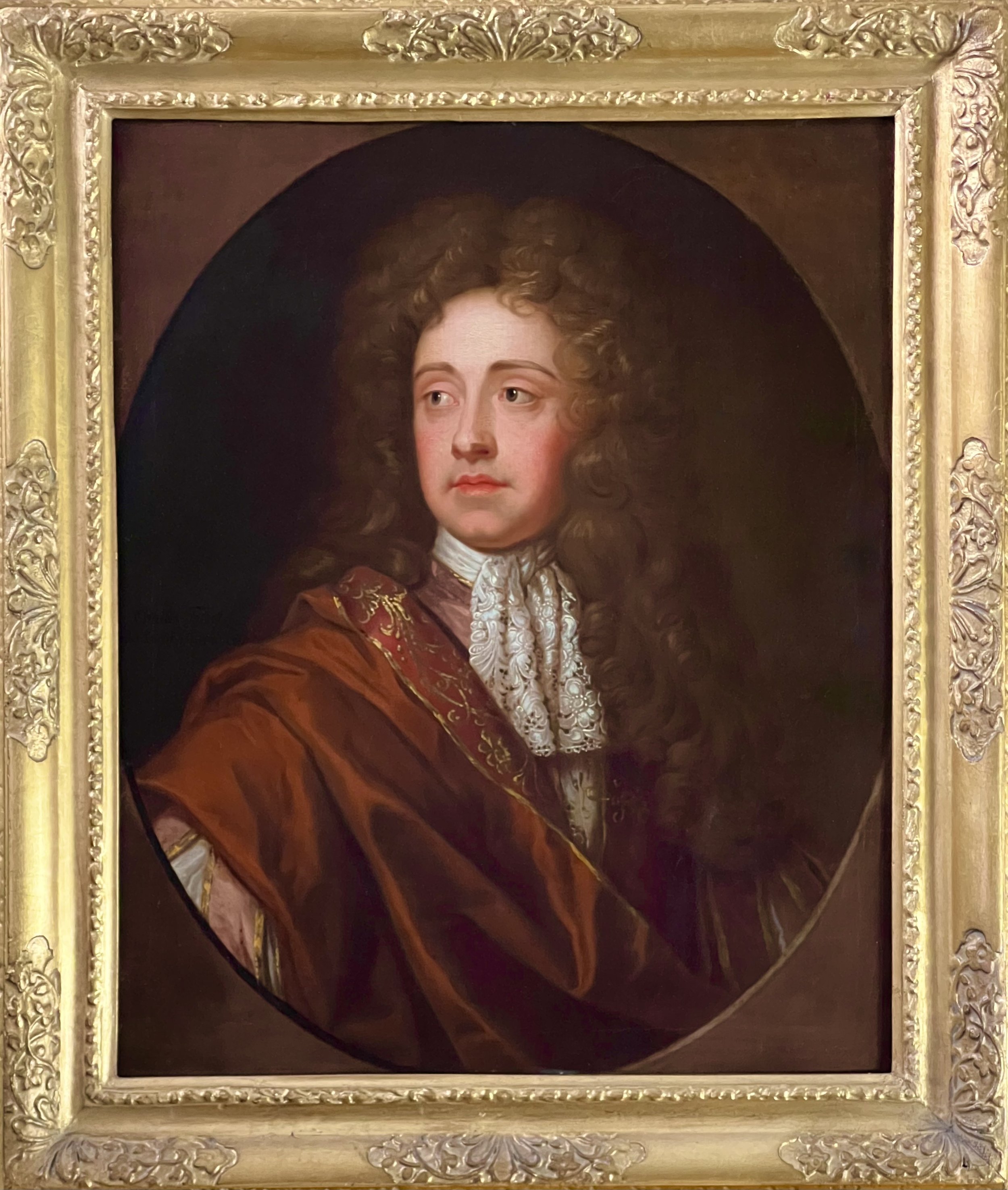
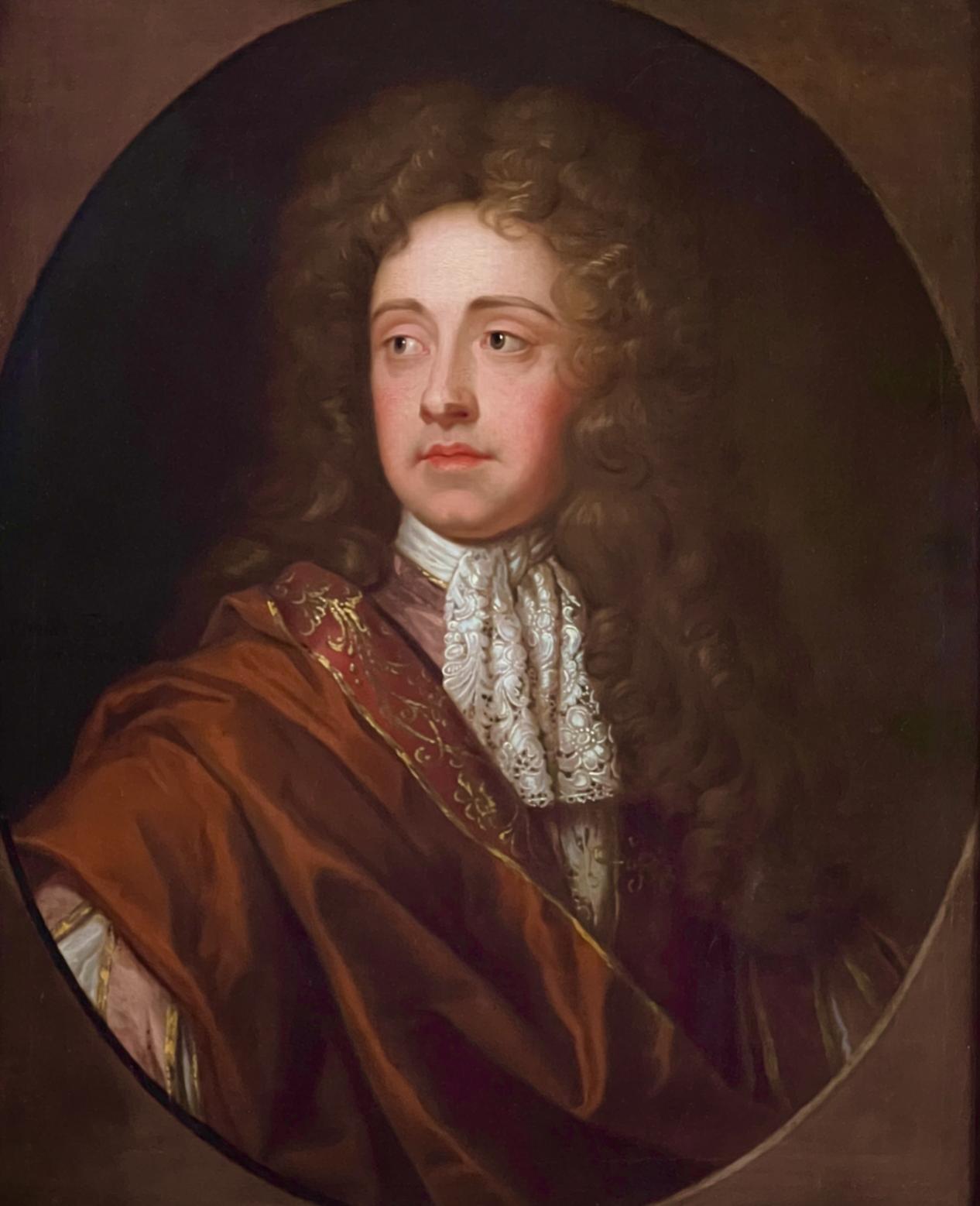

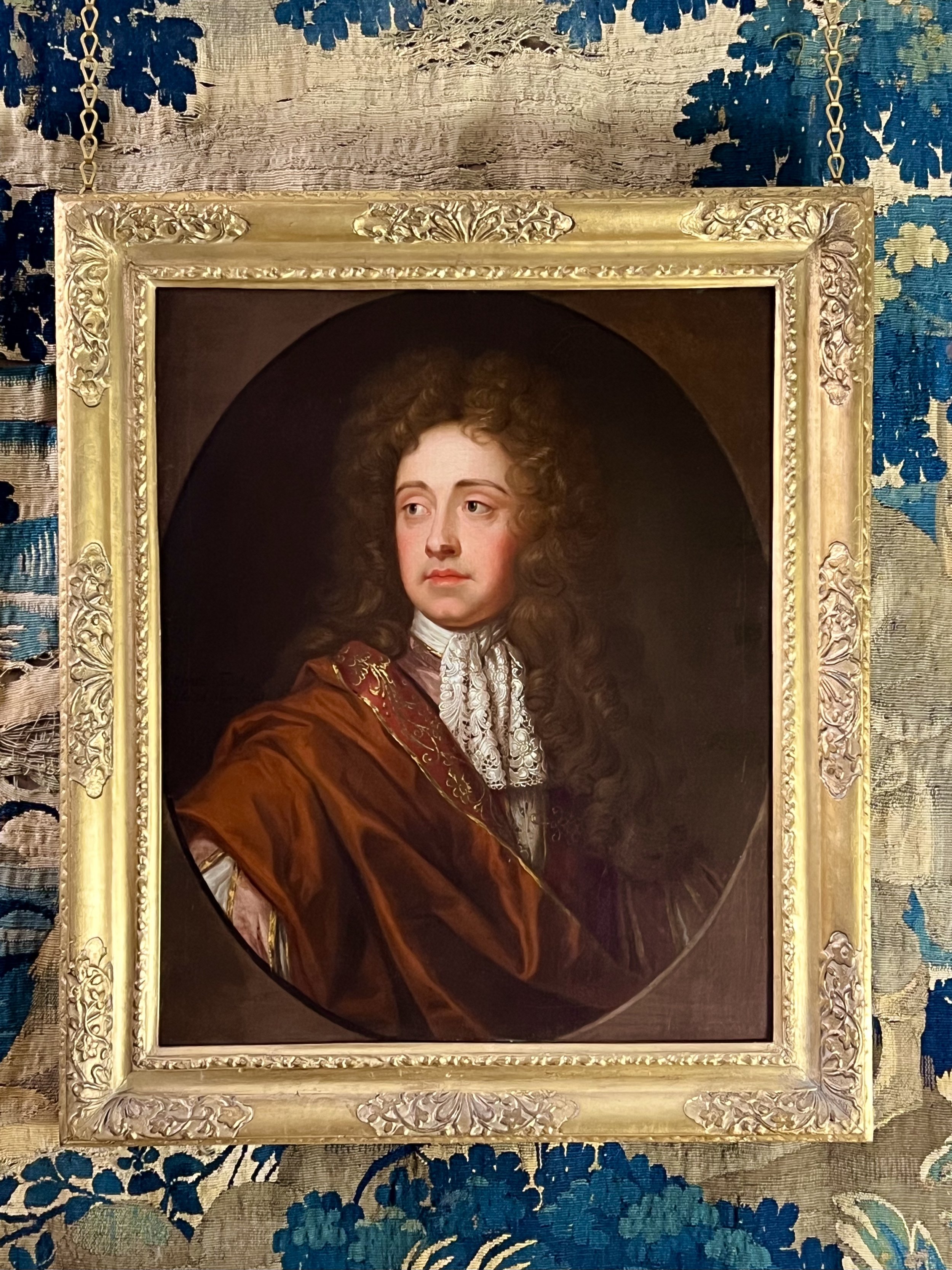

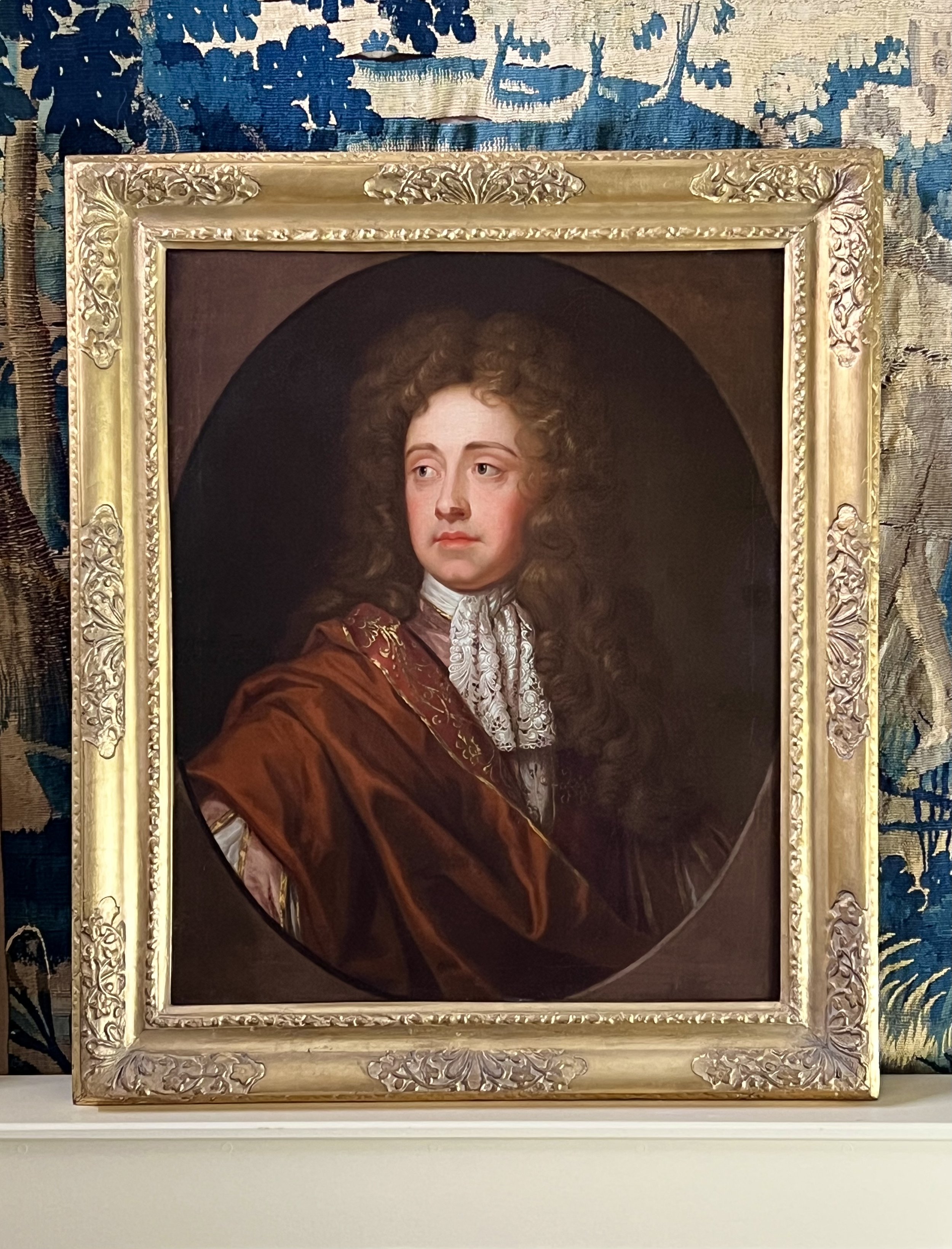
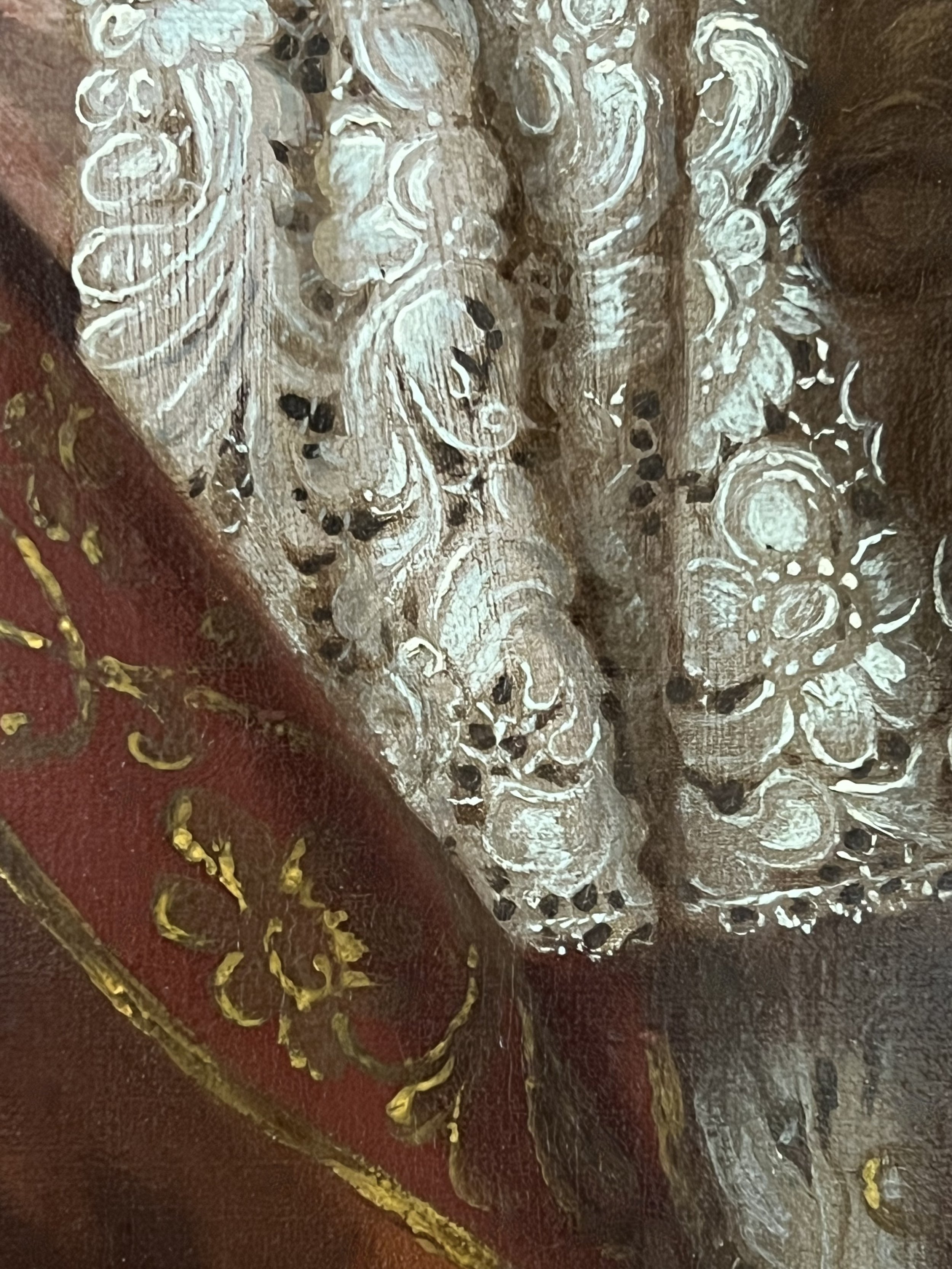
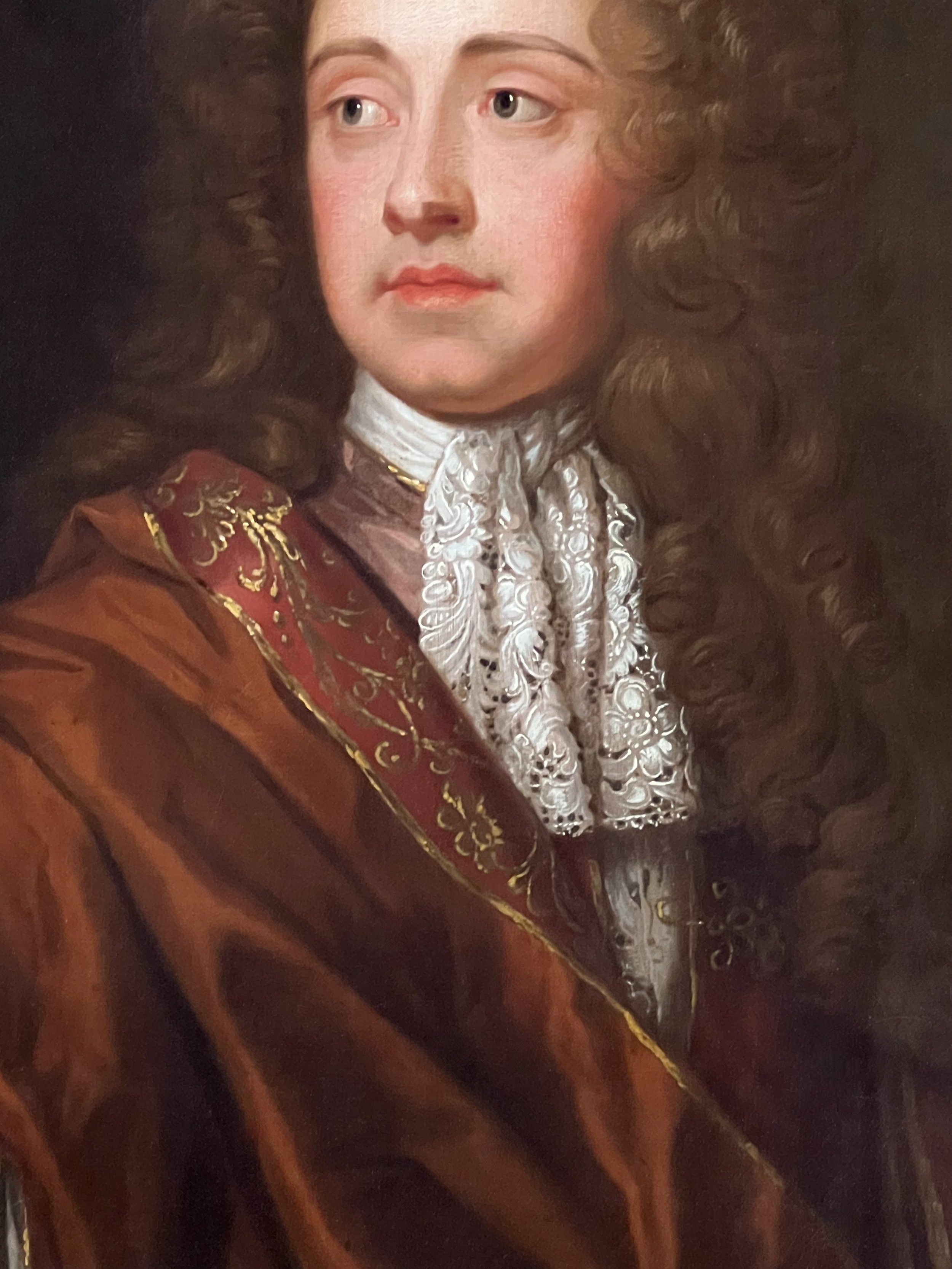
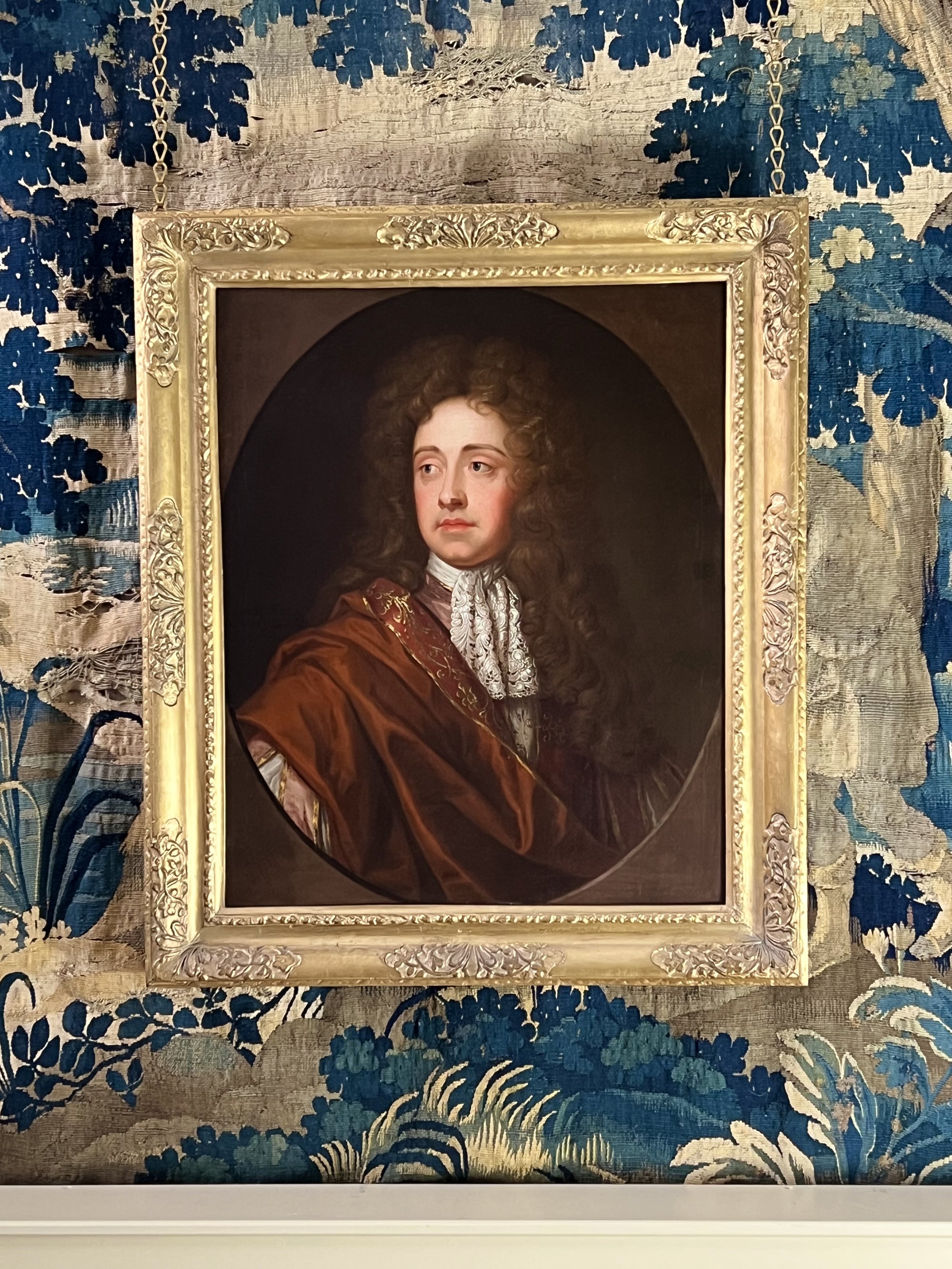
CHARLES TALBOT, DUKE & 12TH EARL OF SHREWSBURY - STUDIO OF SIR GODFREY KNELLER.
Fine early 18th century English portrait of Charles Talbot, Duke & 12th Earl of Shrewsbury. K.G (1660 - 1718) from the studio of Sir Godfrey Kneller (1649-1723)
The sitter is depicted bust-length, facing left, wearing a cape embroidered with gold thread over a classical costume with slashed sleeves, and a lace cravat.
Charles was the son of Francis Talbot, the 11th earl of Shrewsbury, and his second wife, Anna Maria, the notorious mistress of George Villiers, 2nd duke of Buckingham. Buckingham killed Francis Talbot in a duel in 1668, and thus the son succeeded to the earldom at the age of seven. Brought up a Roman Catholic but converted to Anglicanism in 1679, he was one of the seven men who, on June 30, 1688, signed a document inviting the Protestant ruler William of Orange, stadholder of Holland, to seize power from England’s Catholic king James II. In September he joined William in Holland. Returning to England with the invading forces in November, Shrewsbury quickly secured Bristol and Gloucester for the rebels. He served as secretary of state under William (by then King William III of England) in 1689–90 and from 1694 to 1699, resigning both times in order to avoid involvement in political feuds. The price of his return in 1694 was the king’s agreement to a Triennial Act governing the calling of future Parliaments. William made him a duke in 1694.
In 1680, when Charles Talbot was 20, it was reported by the Dowager Countess of Sunderland that he had a 'blemish on one eye, that 'tis offensive to look upon it'. This was later removed and, although his eyesight was saved, he wore an eyepatch (this does not appear in known portraits).
During the reign of Queen Anne (1702–14) Shrewsbury shifted his allegiance from the Whigs to the Tory Party In 1710 he helped bring about the dismissal of the Whig ministry that was directing the war against France (War of Spanish Succession, 1701-1714); a peace-seeking Tory administration then negotiated an end to the conflict. During this period Shrewsbury served as lord lieutenant of Ireland, returning in June 1714.
On July 30, 1714, Anne, on her deathbed, appointed Shrewsbury lord high treasurer, and through this office he was able to obtain the recognition of George I, great-grandson of King James I, as the legitimate royal heir. Soon thereafter the duke retired from politics. He died without issue and the dukedom and marquessate became extinct.
This work is in an excellent state of conservation. The paint surtface is stable and has benefitted from a light clean and re varnish. It is housed in in an original hand carved ed and gilded ‘Lely style’ frame which has been sympathetically refinished.
Higher Resolution images on request. Worldwide shipping available.
Canvas: 25" x 30" / 64cm x 76.5cm. Framed: 30" x 40" / 76.5cm x 102cm.
SOLD.

